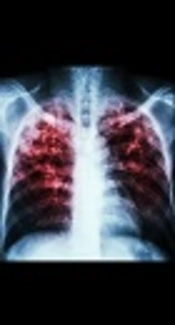1. Background
One of the main infectious diseases and major universal health issues is Tuberculosis (TB), resulting in high economic demands on health care systems (1). TB is considered as one of the most common cause of death in prisons of developing countries (2).
TB prevention will be possible by well-timed detection and caring for patients with TB among prisoners. Moreover, multidrug-resistant (MDR) TB is threatening the prison settings health (3).
Previous studies in some prisons showed a significant variation in the TB prevalence in prisons, for example, 7.6% in Zambia (4), 2.7% in Brazil (5), and 2.4% - 4.9% in South Africa (6).
TB grows in the crowded and poorly ventilated environments of prisons all around the world, especially developing countries. Other factors like higher prevalence of HIV infection, malnutrition and stress among prisoners can also provide the higher risk of infection. On the other hand, inadequate medical interventions or lack of medical accessibility can provide the suitable condition for acquisition of resistance. The socioeconomic backgrounds of prisoners play an important role in TB prevalence whereas most have a mental illness, are substance users, or homeless. Therefore, they enter the prison with the TB infection or even active disease. Furthermore, prisons have an effect on the TB burden in the whole society whereas the prisoners are not an isolated population and are connected to the society through the staff and visitors (7).
The implementation of some policies can control TB transmission in prisons, including TB active case finding (ACF), strict isolation during the contagious phase, and communication with medical care providers, health education, and BCG vaccination (8-11).
Our study aimed to assess the incidence of TB among male prisoners in Tehran, Iran, compared to the community. The comparison can reveal the importance of TB control in the prisons.
2. Methods
In this study, we investigated TB incidence among male prisoners in the Great Tehran Prison from October 2013 to May 2014. An institutional review board (IRB) of Tehran University of Medical Sciences evaluated and accepted the study protocol. All prisoners gave informed consent.
All prisoners were examined for symptoms of TB by ACF strategy. This method was previously explained in another published article (11). Briefly, healthcare staff and communicators educated the prisoners on TB symptoms like chronic cough, sputum, night sweats, fever, and weight loss. Finally, all the prisoners with suspected TB symptoms were referred to a prison clinic to investigate the infection by sputum examination for acid-fast staining and Chest X-ray.
3. Results
In total of 5865 prisoners, only nine patients with an age range of 23 to 49 years were diagnosed with TB, while 2263 out of 4 503 516 people of the society with the same age range had TB in this period of time. Statistical analysis showed that out of 100,000 individuals, 153.5 patients were detected in the prison and 5.02 patients in the society. Therefore, the incidence of TB in the prison was significantly more than the society (P < 0.0001) and the ratio of TB incidence in the prison to the society was 30.6 (95% CI: 16 - 58).
4. Discussion
Our study showed that the incidence of TB amongst prisoners was significantly higher than the society (P < 0.0001). Thus, the prison setting and total hygienic condition should be revised.
Our investigation revealed that the risk of TB incidence in prisons is higher than the general population. The generalizability of these findings are investigated in some studies, which showed that the better control of TB incidence in prisons not only helps prison health improvement and protects the staff and prisoners from infection, however, it also decreases the TB burden in the general population. Moreover, more investigations are needed to reveal the factors influencing TB transmission to help provide effective programs of TB prevention in prisons (12).
As estimated by the world health organization, the incidence rate of TB is 28 cases per 100,000 populations in Iran (1). The proportion of TB in prisons to the general population is reported up to 100 times. The prisoner TB cases may account for up to 25% of a country’s burden of TB (13).
The high incidence of TB in the prison compared to the society suggests that extremely overcrowded conditions, poor ventilation, high prevalence of HIV, and inadequate general health of inmates are leading to transmission and high incidence of TB in prisons.
Therefore, we suggest general health improvement in the prisons and also appropriate educations about TB symptoms and transmission routes to inmates. TB screening would be helpful to prevent more incidences and to implement treatment programs to reduce the transmission of infectious diseases among the prisoners to improve life quality of prisoners and also prison staff.
